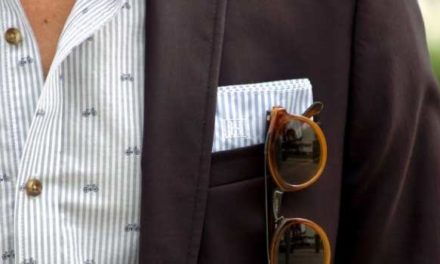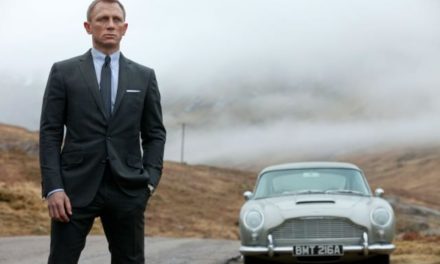When one thinks of a teenage guy in the 1950s, images of antisocial greasers and social pariah geeks come to mind. These are different from what 50s teenage male fashion looked like, which was Clothing that was practically identical to that of their fathers.
In the 1950s, children of both sexes wore clothing that made them look like miniature copies of adults. However, the fashion that children wore on the weekends and after school was what truly defined the decade. The iconic pieces of clothing for adolescent boys to wear in the ’50s are saddle shoes, blue denim, gab coats, and varsity sweaters.
Let’s have a look at why…
1950S Teenage Suiting
When they went to church, school, the prom, or any other semi-dressy to highly dressy occasion in the 1950s, teenage guys were required to wear suits or sport coats with dress pants. Sportcoats were typically paired with solid-coloured pants that matched or mismatched the jacket.
The coats might be a vibrant solid colour, but more than likely, they will have a pattern on them, such as horizontal stripes, plaid, check corduroy, or colour blocking in two tones. Underneath, a white or sometimes coloured dress shirt was worn with a necktie or bowtie to complete the look.
It was hip to wear matching sets consisting of sportcoats and suits. The coats had their unique style, with a relaxed, straight, and comfortable fit. They could be removed from the inside if necessary but were typically worn with them on. Visit stores that sell suits as well as sports coats.
A simple grey and blue suit might be worn to formal events. This was acceptable. Until the late 1950s, the traditional attire for the prom was an all-black tuxedo. After that, the fashion was to wear white dining jackets over black trousers. A further discussion on the prom and formal attire.
Comfy Clothing from the 1950s, Including Sweaters and Cardigans
Cardigans and sweaters were other options for young men in their teens and early twenties who wanted to dress up or dress down an outfit. Wearing a varsity or inscribed cardigan jumper was the hippest and most stylish way to express support for one’s alma mater.
As an alternative to sports jackets, most guys wore their school colours with a school or club letter embroidered on one side. It was acceptable in schools, and many young men favoured the cosy feel of a jumper.
In addition, boys may wear a pullover jumper with a V-neck instead of a tie and shirt. When the weather became warmer, another alternative that was available to wear was a sleeveless jumper vest.
The comfortable jumper and cardigan with an argyle print or a Nordic wintery print were what they wore throughout the year’s colder months.
Pants: A Casual wear Item from the 1950s
The pants that were worn for formal events and those that were worn more casually looked identical. The pleated pants were worn high on the waist, with a full, snug fit over the hips, and tapered gently from the knee down to the cuffs of the legs.
By the decade’s close, a new Ivy design brought the waistline of trousers down a touch, flattened out the pleats, and gave the pant leg a slimmer, more tapered look. The pants were held up on the high waistline by a slender belt made of leather. The colours were predominantly solid but came in a wide range of tones, from earth tones to pastels.
In the 1940s, blue jeans first gained popularity among teenage guys, and by the 1950s, they had become an absolute necessity for young people. Although they were prohibited at school, lads did not hesitate to don them after times and on weekends.
They had a dark wash and thick cuffs that were rolled up. The look was reminiscent of Westernwear or workwear denim. They were typically worn with a belt with a western-inspired design, but in the city, a simple belt was more common. Shop for jeans and trousers from the 1950s.
The combination of blue jeans and white T-shirts came to be associated with the rebellious adolescents shown in films such as “Rebel Without a Cause.”
Most teenagers wore jeans, button-down shirts, or striped T-shirts with casual attire to avoid being typecast. Today, the Rockabilly or Greaser style is most commonly identified with this aesthetic.
1950S FootwearFootwear
Saddle shoes in black and white were popular among teenagers. This is correct, although most of the time, they wore other FootwearFootwear. The lace-up Oxford shoe was becoming less and less popular as laceless slip-on shoes took their place in the fashion world.
The penny loafer, sometimes known as a loafer, was a popular shoe style in the 1940s. These loafers were often black, greyish, or blue. A shoe with a moccasin top that either laced up or slipped on was also very fashionable.
After its introduction in the late 1950s, the Shu-Lok design quickly became ubiquitous among adolescents. The tongue slid into its proper position with a clack. It was such a blast to put them on and take them off!
The sole was where one could tell the difference between men’s and women’s footwear. On the bottoms of their shoes, teenagers favoured having a crepe or rippling sole that was thick and hefty. Additionally widespread were soles made of gum rubber and wedge heels.















